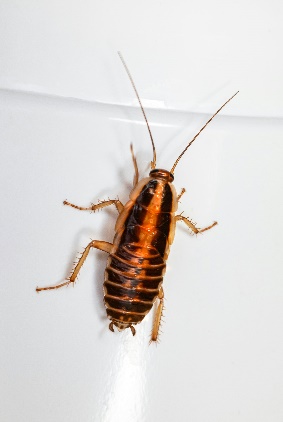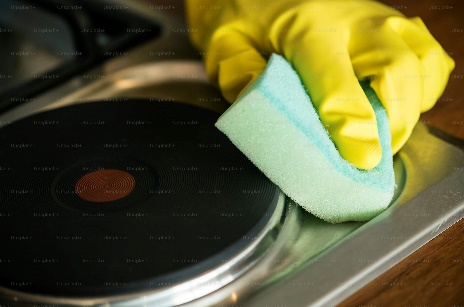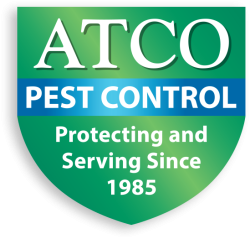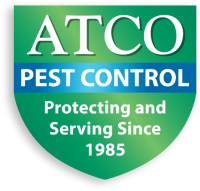How Roaches Get into Your Bay Area Home —And How to Get Rid of Them

You finally settle in for the evening and… you spot something scuttling across the floor near the kitchen sink. Roaches are encroaching on your space! At ATCO Pest Control, we’ve seen it many times. The good news: it’s fixable. With the right approach—rooted in science and experience—you can get ahead of roaches, stop them from returning, and reclaim your space.
Why Roach Control Can Be a Challenge
Roaches are resourceful survivors. According to UC IPM:
- They thrive wherever they can find food, water, and shelter.
- Some indoor-breeding species (like the German cockroach) reproduce rapidly and hide in narrow cracks and dark spaces.
- Traditional sprays alone often fail: many liquid or aerosol treatments kill less than 20% of the population.
- Outdoor “nuisance” species will invade when conditions push them inwards—poor sanitation, neglected maintenance, or moisture issues.
At ATCO, our difference is that we don’t just spray what you see. We inspect, identify species and entry points, recommend sanitation and structural fixes, and then treat with targeted baits and tools. This reflects our D.I.R.T. process (Detect → Inspect → Recommend → Treat) and shows that your home is treated as a system, not just a drop-in service.
This is why many professionals prefer professional roach control over DIY methods.
How Roaches May Have Gotten In
Roaches often sneak in through tiny cracks and gaps around doors, windows, plumbing lines, or utility openings. In multi-unit buildings, they can travel from one unit to another through shared walls, pipes, or conduits. Outdoors, they may hide in wood piles, irrigation boxes, or even leaf litter close to the foundation — all perfect launching points for an indoor invasion. German cockroaches are known to “hitchhike” their way indoors on things such as cardboard boxes, furniture, or used appliances. Poor sanitation and/or food and water availability is another factor, as even a small amount of crumbs or moisture creates a welcoming environment.
And where do roaches hide? Once they’re in, they find warm dark hiding spots: behind refrigerators, ovens, dishwashers, under sinks, inside cabinets, inside wall voids, or under baseboards.
Signs of Roaches to Look For
Before the technician arrives (or even just to better understand what’s going on), keep an eye out for the following conditions:
- Droppings (small black specks that may resemble coffee grounds or pepper), egg-cases (oothecae) in cracks or cabinetry.
- Musty, oily odor typical of heavy infestations (especially German roaches).
- Live roaches or shed skins, often at night when lights are turned on or in hidden dark spots.
- Water sources: plumbing drips, under-sink leaks, condensation issues.
- Outside, check for wood/leaf-litter piles, meter boxes, gaps under door sweeps, screens missing, wall penetrations.
What NOT to do
- Do not use insecticide sprays or foggers before the inspection — sprays often mask the problem and can interfere with proper baits or control strategies. (Research shows sprays alone seldom succeed).
- Do not assume one application will do it — roach elimination takes layered work (sanitation + exclusion + professional treatments).
- Do not neglect structural issues (gaps, leaks, harborage zones) — ignoring these allows return.
- Do not use DIY fixes as a substitute for inspection and treatment from a licensed professional in multi-unit or chronic cases.
What to Do Until ATCO Arrives



- Clear away clutter near kitchen counters, under-sink areas, and behind appliances. Sweep or vacuum and dispose of debris & crumbs: sanitation is foundational.
- Remove exposed food: keep counters clean, seal pet food when not in use, and keep garbage lids closed.
- Fix simple leaks or drips (even a slow drip invites roaches).
- Place sticky traps in kitchens and baths to help you and our technician better gauge population activity.
- For multi-unit buildings: inform tenants of no-treat zones, coordinate communal cleaning, reduce harborage sites outside (trash rooms, debris piles, stored boxes).
Our Proven Approach
At ATCO, we stand apart by combining technical depth with a client-first service mindset:
- Inspection: Our licensed technicians begin with a thorough inspection—identifying species (German, Brown-banded, Oriental, Turkestan, etc.), entry points, extent of infestation and contributing conditions.
- Recommendation: We develop a customized plan for your residence or multi-unit complex that may include sanitation improvements, exclusion work, moisture control, and harborage reduction.
- Treatment: We use environmentally responsible methods that are customized to your home and the roach species present.
- Follow-through & Monitoring: We set sticky traps, monitor outcomes, and adjust as needed, realizing that roach control is a process, not a one-time fix.
- Education & Roach Prevention: We empower you (and your tenants in multi-unit situations) with actionable guidelines so the environment doesn’t become inviting again.
If you’ve found evidence of roaches—or even if you haven’t but suspect the conditions are there—don’t wait. Roach populations don’t decline on their own; they spread quietly. For Pest Control in the Bay Area, let ATCO step in with a thorough plan built for your home, multi-unit building, or commercial space.
Click here to schedule a roach inspection. We’ll detect, inspect, recommend, and treat—then monitor until your home is roach-free. For more info on ATCO, read about our certifications here.



